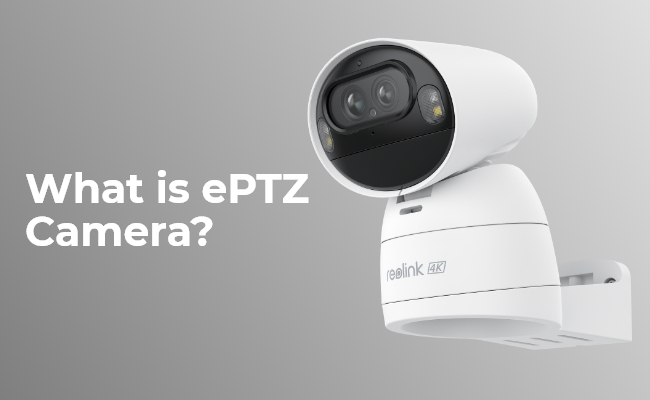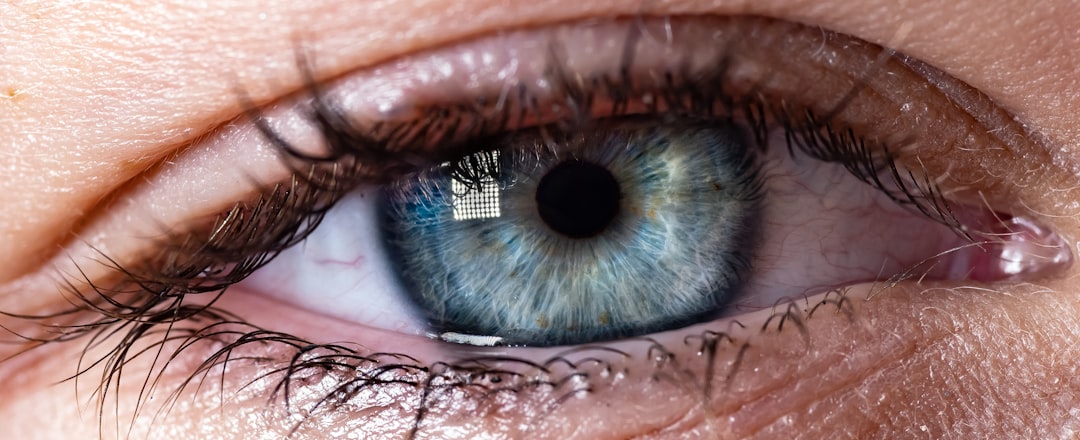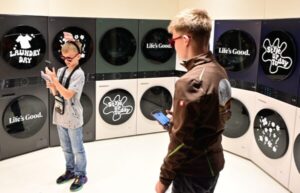The Dawn of a New Vision: AI-Powered Cameras Redefine Collaboration
The landscape of professional audio-visual (ProAV) technology is undergoing a seismic shift, driven by the universal adoption of hybrid work and the ever-increasing demand for high-quality, dynamic video content. At the heart of this revolution are intelligent cameras, no longer passive observers but active participants in creating engaging experiences. The latest developments in AI Cameras News signal a move beyond simple resolution bumps and wider fields of view. Today, we are witnessing the rise of sophisticated devices that leverage artificial intelligence to automate direction, framing, and tracking, effectively putting a virtual director in every conference room, lecture hall, and event space. This new generation of Pan-Tilt-Zoom (PTZ) and electronic PTZ (ePTZ) cameras is not just an incremental upgrade; it represents a fundamental rethinking of how we capture and deliver video, making professional-grade production accessible, automated, and seamlessly integrated into our digital ecosystems. This evolution is a hot topic, frequently appearing in discussions about AI Office Devices News and the broader impact of intelligent hardware on modern workflows.
Section 1: Understanding the AI-Driven Camera Paradigm
To appreciate the significance of this new wave of technology, it’s essential to understand the two primary types of intelligent cameras gaining prominence and how AI enhances their core functionalities. While both serve to dynamically frame subjects, their methods and ideal applications differ significantly, representing major advancements in AI-enabled Cameras & Vision News.
The Rise of the AI ePTZ Camera
Electronic Pan-Tilt-Zoom (ePTZ) cameras represent a triumph of software and sensor technology. Unlike their mechanical counterparts, ePTZ cameras have no moving parts. Instead, they utilize a high-resolution sensor—typically 4K or even 8K—to create a large digital canvas. The “pan,” “tilt,” and “zoom” effects are achieved by cropping and moving a smaller frame (e.g., a 1080p window) within this larger canvas. The magic of AI comes into play by automating this process. On-board processors, a key focus in AI Edge Devices News, run sophisticated algorithms to:
- Auto-Framing: The camera detects all individuals in its field of view and intelligently adjusts the digital frame to keep everyone perfectly composed in the shot. If someone leaves or a new person enters, the frame smoothly readjusts.
- Speaker Tracking: By integrating with microphone arrays or using sound source localization, the camera can identify who is speaking and automatically create a close-up shot of that individual. When the conversation shifts, the camera seamlessly transitions to the new speaker.
- Presenter Mode: This feature allows the camera to track a designated presenter as they move around a predefined area, like the front of a classroom or a stage, ensuring they remain the focal point.
The primary advantage of ePTZ cameras is their silent, instantaneous operation and reliability, as there are no mechanical components to wear out. They are ideal for small to medium-sized spaces like huddle rooms, conference rooms, and classrooms where the subjects are within a relatively fixed distance.
The Evolution of the Mechanical PTZ Camera
Traditional Pan-Tilt-Zoom (PTZ) cameras use motors to physically move the lens assembly, offering powerful optical zoom capabilities that digital zoom cannot match without significant resolution loss. These cameras are the workhorses of large venues: auditoriums, houses of worship, and large event spaces. For years, they required a skilled human operator. Now, AI is serving as a highly competent co-pilot. AI in modern PTZ cameras doesn’t replace the powerful optics but enhances their use by:
- Automated Subject Tracking: Advanced computer vision algorithms can lock onto a person and smoothly follow them across a large stage or room. This is far more sophisticated than simple motion tracking; the AI understands it’s tracking a human form, preventing it from being distracted by other movements. This technology shares principles with advancements seen in Drones & AI News and Autonomous Vehicles News.
- Intelligent Shot Composition: AI can be programmed to follow cinematic rules, such as the “rule of thirds,” ensuring that even automated shots are aesthetically pleasing. It can automatically switch between a wide shot of the stage and a tight shot of the speaker’s face.
- Preset Recalls with Intelligence: While presets are not new, AI can add a layer of intelligence, for example, by automatically adjusting the zoom level of a preset based on whether one person or a group is standing at that location.
These AI enhancements make high-end production values achievable with minimal human intervention, a significant trend in the world of AI Tools for Creators News.
Section 2: A Deeper Look at the Technology Stack

The capabilities of these new cameras are built on a sophisticated stack of hardware and software components working in concert. From the sensor that captures the light to the processor that makes sense of it, each element is crucial for delivering a seamless, intelligent video experience. This convergence of hardware and software is a recurring theme in AI Research / Prototypes News.
On-Device AI and Edge Processing
A critical aspect of modern AI cameras is their reliance on edge computing. The AI processing—face detection, human pose estimation, voice localization—happens directly on the camera itself, not in the cloud. This has several profound benefits:
- Low Latency: Real-time tracking and framing require instantaneous analysis. Sending video to the cloud for processing would introduce unacceptable delays. On-device AI ensures the camera’s movements are immediate and natural.
- Enhanced Privacy and Security: Keeping the video analysis local is a massive security advantage. Sensitive meeting content isn’t streamed to a third-party server, addressing major privacy concerns. This is a critical consideration discussed in AI Security Gadgets News, where on-device processing is becoming a standard for trust.
- Network Efficiency: The camera only needs to stream the final, produced video feed, not multiple streams or raw data for external analysis. This reduces the load on the corporate or venue network. This efficiency is also a goal in the development of AI Sensors & IoT News.
Advanced Optics and Sensor Technology
The quality of the AI’s output is fundamentally limited by the quality of the input. The latest generation of cameras features significant optical improvements. For ePTZ models, this means larger, more light-sensitive 4K/8K sensors that allow for “lossless” digital zoom up to 2x or 3x while maintaining a crisp 1080p or 4K image. For high-end PTZ cameras, manufacturers are partnering with renowned lens makers to incorporate broadcast-quality glass, offering 15x, 20x, or even 30x optical zoom with exceptional clarity and low-light performance. This focus on data quality is also seen in Health & BioAI Gadgets News, where sensor accuracy is paramount.
Seamless Integration and Simplified Connectivity
Perhaps the most significant practical advancement is the move towards ecosystem integration and simplified connectivity. The days of needing separate cables for power, control, and video are numbered. The new standard is a single-cable solution, often USB-C or Power over Ethernet (PoE). More importantly, leading manufacturers are designing cameras to be native components of a larger AV ecosystem. This means that from a central touch panel or software interface, an integrator can control cameras, audio, lighting, and displays without complex third-party programming. This plug-and-play philosophy simplifies installation, reduces points of failure, and lowers the total cost of ownership, making these powerful tools more accessible than ever. This trend towards integrated smart systems echoes developments in Smart Home AI News and Smart Appliances News.
Section 3: Real-World Scenarios and Strategic Implications
The true impact of these technologies is best understood through their application in real-world scenarios, where they solve tangible problems and create new possibilities for communication and collaboration.
Case Study 1: The Equitable Hybrid Boardroom
Challenge: In a hybrid meeting, remote participants often feel disconnected. A traditional static webcam shows a wide, impersonal view of the conference room, making it difficult to read body language or see who is speaking.
AI Camera Solution: An AI ePTZ camera is installed. When the CEO begins the meeting, the camera frames the entire table. As the CFO starts presenting financial data, the camera’s speaker tracking feature smoothly zooms in on her. When a debate sparks between two department heads on opposite sides of the table, the camera intelligently creates a split-screen view or a wider shot encompassing both speakers. For remote attendees, the experience is transformed from a passive viewing into a dynamic, engaging conversation that mirrors being physically present. This directly enhances remote work, a key topic in AI Assistants News.

Case Study 2: The Engaging University Lecture
Challenge: A large lecture hall needs to be equipped for remote learning and lecture capture. A single static camera cannot follow the professor as they move across the stage or zoom in on detailed whiteboard equations.
AI Camera Solution: A high-zoom AI PTZ camera is mounted at the back of the hall. The system is configured with AI presenter tracking, which follows the professor automatically. Additionally, presets are programmed for the main whiteboard and a demonstration table. The professor wears a simple lanyard microphone. When they walk to the whiteboard and begin writing, the camera holds a wide shot. When they pause and speak for more than a few seconds, the AI assumes they are explaining a key point and zooms in on the board’s content. This automated production provides a high-quality learning experience for remote students without requiring a dedicated camera operator for every class, a significant innovation for the topics covered in AI Education Gadgets News.
Case Study 3: The Automated Live-Streamed Panel
Challenge: A small organization wants to live-stream a four-person panel discussion but lacks the budget for a multi-camera production crew.
AI Camera Solution: A single 8K ePTZ camera with advanced multi-person tracking is used. The system is set to “conversation mode.” It provides a wide establishing shot of the entire panel, but as soon as a panelist begins to speak, it creates a clean, tight virtual camera shot of that individual. It can even generate multiple output streams, making it appear to the live-stream software as if it were a multi-camera setup. This empowers smaller creators and organizations to produce professional-looking content, a democratizing trend seen in AI Tools for Creators News.
Section 4: Recommendations, Best Practices, and Considerations

Deploying AI cameras effectively requires more than just plugging them in. To maximize their potential and avoid common pitfalls, it’s important to follow best practices and choose the right tool for the job.
Choosing the Right Camera
- ePTZ for Small-to-Medium Rooms: For huddle spaces, conference rooms, and classrooms up to about 25-30 feet deep, an AI ePTZ camera is often the perfect solution. It’s cost-effective, silent, and reliable for covering a defined area.
- PTZ for Large Spaces: For auditoriums, large lecture halls, event spaces, and houses of worship, the optical zoom of a PTZ camera is non-negotiable. Choose a model with a zoom level appropriate for the longest throw distance in your venue (e.g., 15x, 20x, or 30x).
- Consider the Ecosystem: Prioritize cameras that integrate natively with your existing or planned control system, audio processors, and unified communications (UC) platform (e.g., Zoom, Microsoft Teams). This will save immense time and potential headaches during integration.
Common Pitfalls to Avoid
- Poor Lighting: AI, like any camera technology, struggles in poorly lit environments. Insufficient light can lead to grainy images and may hinder the AI’s ability to accurately detect faces and track subjects. Invest in good, even lighting. This is where related technologies like AI Lighting Gadgets News become relevant.
- Ignoring Audio: For the best speaker tracking performance, the camera needs a clear audio source. Integrating the camera with a high-quality microphone array (ceiling, tabletop, or wearable) is crucial for the AI to accurately identify the active speaker. This highlights the synergy with AI Audio / Speakers News.
- “Set It and Forget It” Mentality: While these cameras are highly automated, they still require initial setup and calibration. Take the time to define tracking zones, block out unwanted areas (like doorways or windows), and adjust the tracking sensitivity to achieve smooth, natural camera movements.
Tips and Considerations
When evaluating AI cameras, look beyond the spec sheet. Ask for a demonstration in a space similar to your own. Pay attention to the smoothness and “naturalness” of the camera’s automated movements. Does it cut abruptly or pan gently? Can you customize the tracking speed and behavior? Finally, always consider the long-term support and firmware update roadmap for the product, as the AI models and features will continue to evolve and improve over time.
Conclusion: An Intelligent and Automated Future
The latest generation of AI-powered ePTZ and PTZ cameras marks a pivotal moment in video communication technology. By embedding intelligence directly into the hardware, manufacturers are solving the most persistent challenges of hybrid collaboration and content creation: the need for dynamic, engaging video without the cost and complexity of a professional production crew. These devices are making meetings more equitable, education more accessible, and live events more professional. As the underlying AI models become even more sophisticated and integration becomes even tighter, we can expect these intelligent eyes to become a standard, indispensable component of any modern communication space. The ongoing stream of AI Cameras News confirms that this is not a fleeting trend but the foundation of a smarter, more connected, and visually dynamic future.










